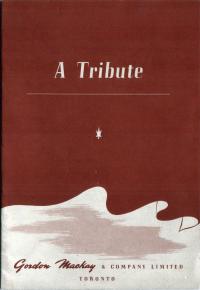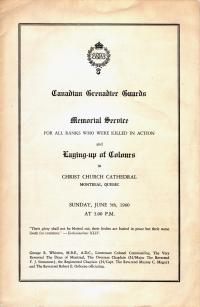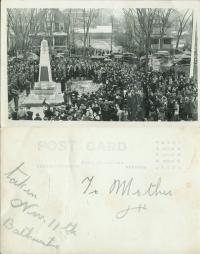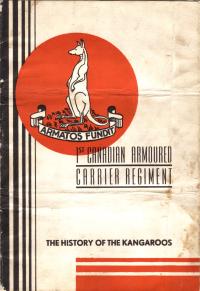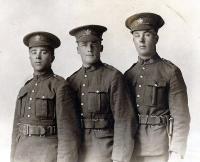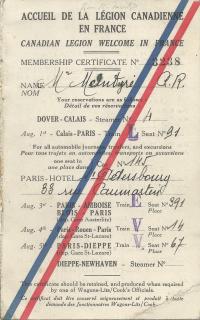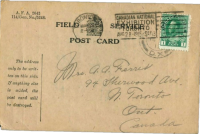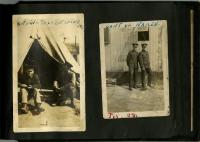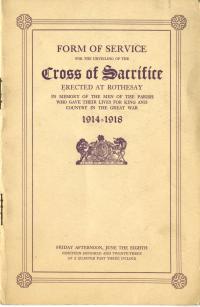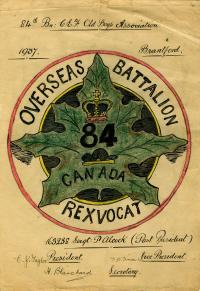Remembering
A corporate service roll
After the Second World War, this wholesale and retail dry goods firm published a booklet to recognize staff members who had served in uniform.
Honouring the Canadian Grenadier Guards
Fifteen years after the end of the Second World War, this Montreal unit laid up its colours in accordance with military tradition.
Remembrance Day service
The Remembrance Day service in Bathurst, New Brunswick, probably early in the Second World War.
The Kangaroos in battle
The 1st Canadian Armoured Carrier Regiment, nicknamed the Kangaroos because its vehicles were intended to carry infantrymen, published this history of its participation in the campaign in north-west Europe after the Second World War, when the unit was stationed in the Netherlands.
Arthur Wylie - from infantryman to doctor
Walter Arthur Wylie (on the right in this photograph) was a student at Yorkton High School in Saskatchewan when he enlisted in the 196th (Western Universities) Battalion in March 1916. He served at the front for seventeen months with the 46th Battalion and was wounded early in the Hundred Days Offensive. Wylie returned to Canada in 1919, to marry Blanche Robinson and begin a long career as a doctor. He treasured these souvenirs from his time in the CEF, and also kept diaries of his wartime experiences (currently being digitized).
A Vimy pilgrim's travel arrangements
Ross McIntyre of Komoka, Ontario, served in the Black Watch rather than in the Canadian Corps - but he still made the trip to France in 1936 for the unveiling of the Vimy Memorial.
Captain Cecil Bruce Ferris
Cecil Bruce Ferris, born in Kingston in 1885, enlisted in the 2nd Field Company, Canadian Engineers in September 1914. While serving in France, he sustained a gunshot wound to the chest and spent time in convalescent hospitals in England; during one of his leaves, he married his sweetheart Clara (known as Rosie) in Deal, England. The collection includes their marriage invitation, and dozens of letters between Bruce and Rosie that were sent to his mother Alice, whom Bruce kept well informed on his life, both at the front and in England.
An album of the Canadian Army Medical Corps
This album, from London, Ontario, features many unidentified photos and images with handwritten captions. Among the identified subjects are Mr. and Mrs. Dechtro, Miss Frances McCabe as a child, Mr. Frank Lafleur, Mr. Thomas Cat, Mrs. Emma Seven Oaks and sister, Lydia Jahnke, Mrs. Grace Raubolt and son, Miss Agnes Davies, Mr. Nick Poulas, Sergeants McFee and Shaw, “Frenchy and Scotty,” George Latimer, Sergeant Major McDonald, Harriet and Isabell Raubolt, Mr. and Mrs. Higginson, the “Riot Squad” in London, Isabell Powell, Sergeant D.G.
Remembering the Sacrifice
A Form of Service from the unveiling of the Cross of Sacrifice in Rothesay, New Brunswick, remembering "men of the parish who gave their lives for King and Country in the Great War".
Old Boys in Brantford
Toronto's 84th Battalion was broken up in 1916 to provide reinforcements for other units, but its members continued to meet for years after the First World War ended.

